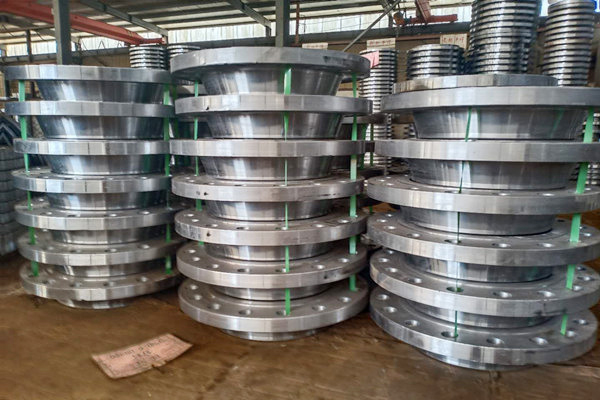The steps of flange forging include selecting high quality billet, heating, forming and cooling after forging.
The forging process includes free forging, die forging and tire film forging. During production, different forging methods are selected according to the size of forging quality and the number of production batches.
Free forging productivity is low, machining allowance is large, but the tool is simple, universal, so it is widely used for forging single and small batch forgings with simple shape.
Free forging equipment has air hammer, steam - air hammer and hydraulic press, respectively suitable for small, medium and large forgings production.
Die forging high productivity, simple operation, easy to realize mechanization and automation. Die forging has high dimensional accuracy, small machining allowance and more reasonable distribution of fiber structure, which can further improve the service life of parts.
Die forging is called model forging. The heated blank is placed in the forging die fixed on the die forging equipment. Generally speaking, forged flange quality is better, generally through die forging production, crystal structure is fine, high strength, of course, the price is also a few more expensive.
Whether cast flange or forged flange is a commonly used flange manufacturing method, depending on the strength requirements of the parts to be used, if the requirements are not high, you can also choose turning flange.
Post time: Sep-17-2021

